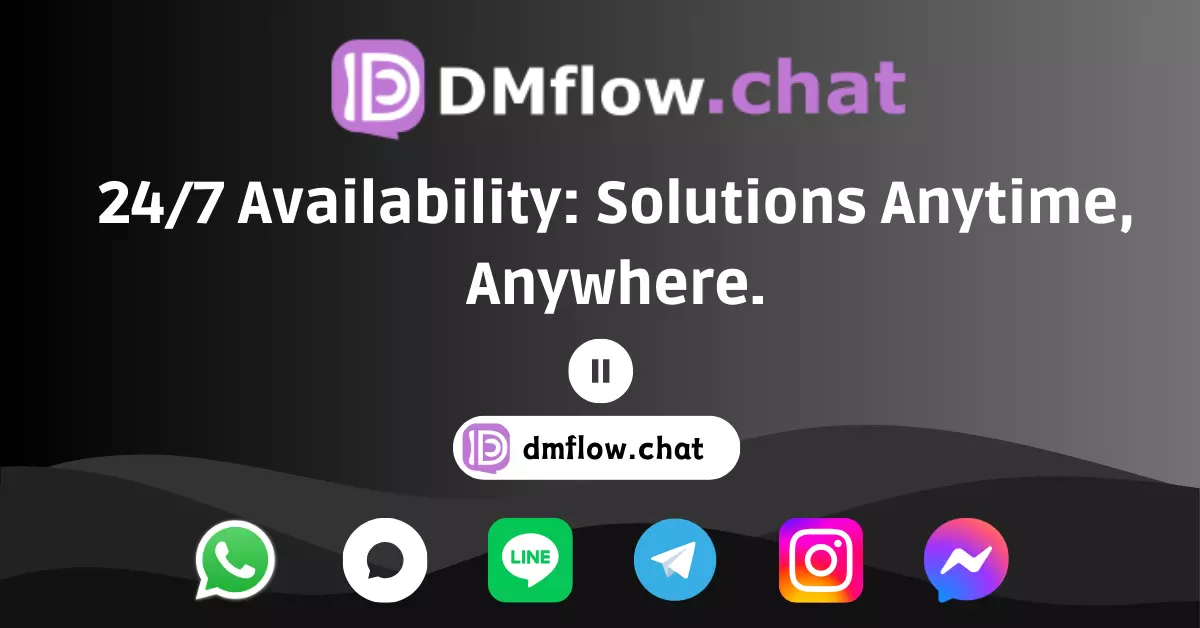Evolution of the ChatGPT Models: From 3.5 to 4.0, and then to 4o and 4o Mini - A Comprehensive Comparison
This article delves into the progression of OpenAI’s ChatGPT series, from ChatGPT-3.5 to ChatGPT-4, and to the latest ChatGPT-4o and ChatGPT-4o mini. We will thoroughly explore the differences and advancements in these models concerning architecture, capabilities, application scenarios, and user experience. Special attention is given to how ChatGPT-4o mini is replacing ChatGPT-3.5, bringing revolutionary changes to AI applications, and the profound impact of this evolution on AI technology and applications.
1. Model Scale and Architecture
The evolution of the ChatGPT series is reflected in the significant enhancements in the scale and complexity of its architecture.
ChatGPT-3.5:
- Number of Parameters: 20B
- Architecture Features:
- Based on Transformer architecture but simpler
- Fast processing speed, low latency
- Suitable for applications requiring quick responses
- Advantages:
- Lower implementation, running, and maintenance costs
- Quick response for simple tasks
- Ideal for resource-limited environments
ChatGPT-4:
- Number of Parameters: Not disclosed, estimated ~1 trillion
- Architecture Improvements:
- More complex Transformer architecture
- Introduced new attention mechanisms to enhance context understanding
- Better at capturing long-term dependencies
- Advantages:
- Significantly improved context understanding
- More coherent and relevant responses
- Capable of handling more complex and abstract tasks
ChatGPT-4 Turbo and ChatGPT-4o:
- Number of Parameters: ChatGPT-4o (200B), reference only
- Architecture Features:
- Efficiency optimizations based on ChatGPT-4
- More efficient computation methods
- Possibly uses sparse attention mechanisms
- Advantages:
- Retains high performance of ChatGPT-4 while improving efficiency
- Handles longer contexts
- Excels in multimodal tasks
ChatGPT-4o Mini:
- Number of Parameters: 8B
- Architecture Features:
- Designed as a cost-effective, smaller model
- Likely uses knowledge distillation techniques
- Optimized for inference speed and resource usage
- Advantages:
- Balances high performance with significantly lower costs
- Suitable for a wide range of everyday AI applications
- Replaces ChatGPT-3.5, bringing advanced AI capabilities to more users
o1-preview:
- Number of Parameters: ~300B
- Architecture Features:
- Likely includes further optimizations compared to ChatGPT-4o (specifics not disclosed)
- Expected focus on enhancing specific tasks such as longer context processing, complex reasoning, or precise generation
- Advantages:
- Anticipated to outperform ChatGPT-4o, though the extent and specific use cases depend on official details
- Larger parameter scale suggests stronger capabilities in handling complex tasks and understanding context
o1-mini:
- Number of Parameters: ~100B
- Architecture Features:
- Positioned between ChatGPT-4o and ChatGPT-4o Mini, aiming for a balance of performance and cost
- Likely incorporates efficiency optimization techniques similar to ChatGPT-4o but on a smaller scale
- Advantages:
- Expected to show significant performance improvements over ChatGPT-4o Mini, capable of handling more complex tasks
- Lower cost and resource consumption compared to ChatGPT-4o and o1-preview
- Suitable for applications that require reasonable performance with cost considerations
These architectural advancements enable the ChatGPT series to learn and understand more complex patterns and nuances. ChatGPT-4 and its variants are particularly suitable for tasks requiring deep understanding and detailed text generation, such as complex analysis, creative writing, and professional domain queries.
2. Training Datasets
The quality and quantity of training data directly affect the capabilities and performance of AI models. The progression of the ChatGPT series in this regard reflects a leap in AI learning abilities.
Data Volume and Diversity:
- ChatGPT-3.5:
- Utilized a large amount of internet text data
- Covered multiple languages and topics
- Data cut off in 2022
- ChatGPT-4:
- Training dataset much larger than ChatGPT-3.5
- Included more professional literature and resources
- Added multimodal data like images and code
- ChatGPT-4 Turbo and ChatGPT-4o:
- Further expanded the data range
- Included more up-to-date information and events
- Enhanced multilingual and cross-cultural data
This increase in data diversity enables the new generation models to handle complex requests and a wide range of queries more accurately and relevantly, from everyday conversations to professional domain queries.
Data Quality:
- Filtering techniques:
- ChatGPT-4 series used more advanced data cleaning and filtering techniques
- AI-assisted content review systems
- Stricter quality control processes
- Quality improvement effects:
- Reduced misinformation and harmful content
- Increased reliability of generated content
- ChatGPT-4 improved by about 40% in generating reliable and accurate outputs compared to ChatGPT-3.5
These improvements significantly reduce the risk of the models generating inappropriate or incorrect information, making them more suitable for high-accuracy scenarios like education, news summarization, and professional consultation.
Training Techniques:
- Algorithmic improvements:
- Introduced more advanced self-supervised learning techniques
- Used optimizations like dynamic batching adjustments
- Implemented more effective gradient accumulation methods
- Architectural enhancements:
- Optimized the model’s attention mechanism
- Improved positional encoding techniques
- Introduced more efficient parameter sharing mechanisms
These technological advancements enable the models to learn more effectively from large-scale data, improving training efficiency and model performance.
Feedback-based Improvements:
- ChatGPT-4:
- Incorporated extensive user feedback from ChatGPT-3.5 usage
- Targeted improvements on common errors and limitations
- ChatGPT-4 Turbo:
- Extended learning cut-off date to December 2023
- Included more real-time events and latest developments
- ChatGPT-4o mini:
- Utilized usage data from previous versions to optimize performance
- Focused improvements on the most common tasks in everyday applications
This continuous improvement process ensures that the models can adapt to user needs and real-world changes, providing more relevant and up-to-date responses.
3. Capability Comparison
The ChatGPT series models demonstrate significant advancements in several key capabilities:
Capacity and Context Handling:
- ChatGPT-3.5:
- Maximum of 4,096 tokens (about 3,072 words) from gpt-3.5-turbo-0613 (changed to 16,385 tokens)
- Suitable for medium-length conversations and text generation
- ChatGPT-4:
- Capable of handling 8,192 tokens (about 6,144 words)
- Maintains longer conversation history
- Suitable for long document analysis and complex tasks
- ChatGPT-4 Turbo and ChatGPT-4o:
- Capacity increased to 128,000 tokens (about 96,000 words)
- Can analyze entire books or long reports
- Suitable for tasks requiring extensive background information
This increase in capacity greatly expands the application range of the models, enabling them to handle more complex and long-term tasks, such as literary analysis and legal document review.
Knowledge and Accuracy:
- ChatGPT-3.5:
- Extensive general knowledge
- Possible errors in some specialized fields
- ChatGPT-4:
- Broader and deeper knowledge range
- Significant improvement in professional and academic fields
- Reduced probability of errors and hallucinations
- ChatGPT-4o and ChatGPT-4o mini:
- Further improved accuracy in specialized knowledge
- Better handling of interdisciplinary questions
- More accurate on the latest events and developments
This improvement in knowledge and accuracy enables the new generation models to provide reliable information and insights in a wider range of fields, from everyday queries to professional consultations.
Multimodal Capability:
- ChatGPT-3.5: Limited to text input and output
- ChatGPT-4 Turbo:
- Capable of processing and analyzing images
- Able to understand image content and provide relevant descriptions
- ChatGPT-4o:
- Expanded to handle text, audio, video, and other formats
- Enhanced multimodal information integration capability
The improvement in multimodal capabilities allows the new generation models to operate in richer contexts, providing more comprehensive and diverse services, from image descriptions to multimedia analysis.
Generation Ability:
- ChatGPT-3.5:
- Fluent content generation but sometimes lacks depth
- Good at creative writing and conversation generation
- ChatGPT-4:
- Generates more coherent and logical text
- Enhanced creative and technical writing abilities
- ChatGPT-4o and ChatGPT-4o mini:
- Further improved naturalness and depth of generated content
- Better at capturing subtle emotions and tone variations
This improvement in generation ability allows the new generation models to play a role in a wider range of creative and professional applications, providing high-quality output from literary creation to technical documentation.
Multilingual Support:
- ChatGPT-3.5:
- Supports multiple languages but sometimes with errors
- Slightly inferior performance in non-English languages
- ChatGPT-4:
- Improved accuracy and fluency in multilingual support
- Significant improvement in major languages
- ChatGPT-4o and ChatGPT-4o mini:
- Further expanded language support range
- Enhanced processing capability for low-resource languages
This improvement in multilingual support allows the new generation models to better serve global users, providing accurate and fluent multilingual support, benefiting cross-border enterprises and multilingual education.
4. Application Scenarios and User Experience
The progression of the ChatGPT series is not only reflected in technological improvements but also in broader and more diverse application scenarios and improved user experience.
Application Scenarios:
- ChatGPT-3.5:
- Mainly used in customer service, simple chatbots, text generation
- Suitable for quick-response and low-complexity tasks
- ChatGPT-4:
- Expanded to professional fields like education, medical, finance, law
- Suitable for complex query answering, detailed analysis, and creative tasks
- ChatGPT-4o and ChatGPT-4o mini:
- Further expanded to multimedia analysis, interactive entertainment, virtual assistants
- Suitable for comprehensive information processing and intelligent services
These application scenario expansions allow the ChatGPT series to play a role in more fields, providing more valuable services and creating new business models.
User Experience:
- Response speed:
- ChatGPT-3.5: Fast response time, suitable for real-time interaction
- ChatGPT-4: Slightly longer response time but with higher quality output
- ChatGPT-4 Turbo and ChatGPT-4o: Optimized for both speed and quality
- Interactive experience:
- ChatGPT-3.5: Good but occasionally superficial
- ChatGPT-4: More engaging and relevant conversations
- ChatGPT-4o and ChatGPT-4o mini: Even more natural and coherent interactions
These improvements in user experience enable users to better interact with AI models, enhancing satisfaction and engagement.
Cost and Resource Optimization:
- ChatGPT-3.5: Low cost, suitable for resource-limited environments
- ChatGPT-4: Higher cost, suitable for professional and high-demand applications
- ChatGPT-4 Turbo and ChatGPT-4o: Balanced cost and performance, suitable for wide-ranging applications
- ChatGPT-4o mini: Cost-effective, suitable for large-scale deployment in everyday applications
These cost and resource optimizations allow the ChatGPT series to better meet the needs of different users and application scenarios, providing more flexible and efficient solutions.
Future Prospects
The continuous evolution of the ChatGPT series reflects the rapid progress of AI technology. Future AI models are expected to achieve breakthroughs in the following areas:
Model Efficiency:
- Further optimization of computation and storage efficiency
- Enhanced energy efficiency
- More efficient and scalable architectures
Knowledge Update and Integration:
- More frequent and seamless knowledge updates
- Better integration with real-time data and dynamic information sources
Human-AI Interaction:
- More natural and intuitive interaction methods
- Enhanced emotional intelligence and empathy
These advancements will enable future AI models to better serve user needs, providing more intelligent and comprehensive services.
Conclusion
The evolution from ChatGPT-3.5 to ChatGPT-4, and to the latest ChatGPT-4o and ChatGPT-4o mini, marks a significant leap in AI technology. Each generation of models represents substantial improvements in architecture, capabilities, and application scenarios, offering more powerful, efficient, and versatile AI solutions. As ChatGPT-4o mini replaces ChatGPT-3.5, bringing revolutionary changes to AI applications, we stand at the forefront of a new era of AI technology, witnessing the profound impact of these advancements on various industries and aspects of everyday life.
MEDEC: A Benchmark for Medical Error Detection and Correction in Clinical Notes
Used as a reference for large language model parameters.




